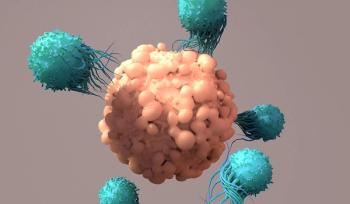
- BioPharm International-08-01-2019
- Volume 32
- Issue 8
FDA Maps Strategies to Advance Cell and Gene Therapies
New tools and policies aim to support more complex manufacturing processes.
The continued surge in research and development of cell and gene therapies is prompting FDA officials to ramp up guidance development, streamline oversight, and take steps to advance manufacturing and clinical development of these cutting-edge treatments. This wave of innovation includes somatic cell gene therapies able to correct gene defects by replacing, repairing, or inactivating a gene, either by directly administered gene therapy to the patient or by taking cells from the body, modifying them in culture, and returning them to the patient.
FDA’s Center for Biologics Evaluation and Research (CBER) has seen an “explosion” of growth in the cellular and gene therapy area, observed CBER Deputy Director Celia Witten at the
A main FDA challenge is to devise standards for this burgeoning cadre of experimental products. FDA is working with the National Institute for Standards and Technology (NIST) and has contracted with the Nexight Group to coordinate
Advanced manufacturing key
A main challenge in testing and developing these new therapies, Witten noted, is to devise new tools and policies to support more complex manufacturing processes. A lack of capacity for producing lentiviral and adeno-associated virus (AAV) vectors can limit clinical development, she observed, while current cell lines often are not able to meet demand for large-scale or rapid production. Regulators and sponsors are looking to advanced manufacturing technology devised for vaccine production processes to inform similar approaches for optimizing cell lines for production, improving yield of recombinant technology, and applying continuous manufacturing concepts to new treatments.
The expedited development and approval of cellular and gene therapies requires a “new paradigm,” said Steven Oh, deputy director of OTAT’s Division of Cellular and Gene Therapies, at the CASSS symposium. He noted the unique challenges created by limited manufacturing experience prior to licensure and limited understanding of critical quality attributes (CQAs) due to difficulties in characterizing the drug product, drug substance, and in-process material for these therapies. Products vary, moreover, due to unusual source materials, less qualified assays, and limited stability data.
Despite these difficulties, Oh emphasized that sponsors cannot ignore requirements for complying with chemistry, manufacturing, and controls (CMC) and current good manufacturing practice (cGMP) standards. It is important, therefore, to focus on these issues early in clinical development to support the accelerated review and approval of a product with a breakthrough or RMAT designation. Manufacturers should plan for commercial-scale manufacturing and conduct needed comparability studies as early as Phase I and II studies. Raw material qualification and supply chain issues should be addressed, and assays should be developed and validated.
At the same time, FDA may exercise some flexibility on the type and extent of manufacturing information expected with a submission, particularly for validation strategies and the manufacturing scale-up program, Oh said. He added that such leeway will depend on product characteristics, the seriousness of the condition being treated, the type of manufacturing process, the robustness of a quality system, and the strength of the risk-based quality assessment. Regulatory flexibility usually will be linked to agreements on post-marketing commitments and requirements.
To assist manufacturers in designing untraditional production or development programs, CBER officials have established the CBER
Developers of innovative therapies similarly can use CBER’s INTERACT program (INitial Targeted Engagement for Regulatory Advice on CBER producTs). This replaces pre-pre-IND interactions and offers early-stage informal consultation on product development. INTERACT is particularly useful for complex or novel manufacturing technologies, innovative devices, and cutting-edge testing methodologies. Such early discussion provides nonbinding advice and doesn’t replace the recommended pre-IND meeting for products further along the development pathway.
A CBER internal working group on advanced manufacturing is soliciting proposals to support innovation relevant to producing complex biologics, including novel and improved materials, manufacturing innovations, and new analytical methods. CBER is expanding laboratory research programs and collaborating with academics and other partners to develop improved cell lines for vector production and advanced manufacturing technologies.
These strategies to provide appropriate and efficient pathways for bringing innovative therapies to patients so far have involved treatments for single-gene disorders that generally affect very small patient populations. The challenges will increase as more manufacturers propose remedies for multigenic targets, such as Parkinson’s disease, which will involve new approaches for clinical trials and for production scale-up.
References
1. C. Witten, “
2. FDA, Standards Development for Regenerative Medicines Therapies,
3. IPRP,
4. ICH,
5. FDA, CBER Advanced Technologies Team,
Article Details
BioPharm International
Vol. 32, No. 8
August 2019
Pages: 8-9
Citation
When referring to this article, please cite it as J. Wechsler, "FDA Maps Strategies to Advance Cell and Gene Therapies," BioPharm International 32 (8) 2019.
Articles in this issue
over 6 years ago
Monitoring and Control of Inline Dilution Processesover 6 years ago
Gene-Editing Techniques Target New Applicationsover 6 years ago
The Moon, the Stars, and the Science Labover 6 years ago
Quality Risk Management Plans Create Effective Quality Systemsover 6 years ago
Best Practices in the QC Micro Laboratoryover 6 years ago
Enhancing Cell Harvestover 6 years ago
The Case for Stainless Steelover 6 years ago
Orchestrating Success in Clinical Trial Manufacturingover 6 years ago
Industrializing Cell and Gene TherapiesNewsletter
Stay at the forefront of biopharmaceutical innovation—subscribe to BioPharm International for expert insights on drug development, manufacturing, compliance, and more.





